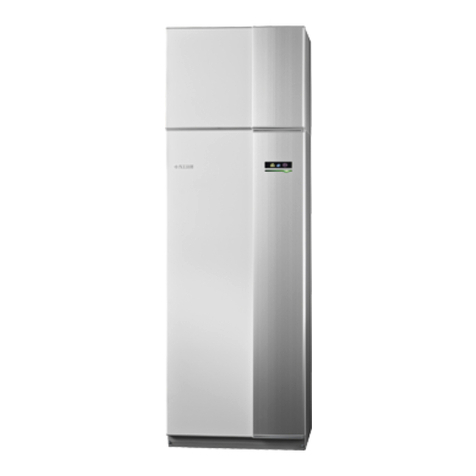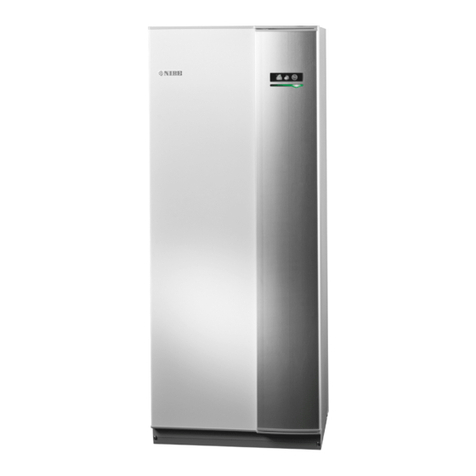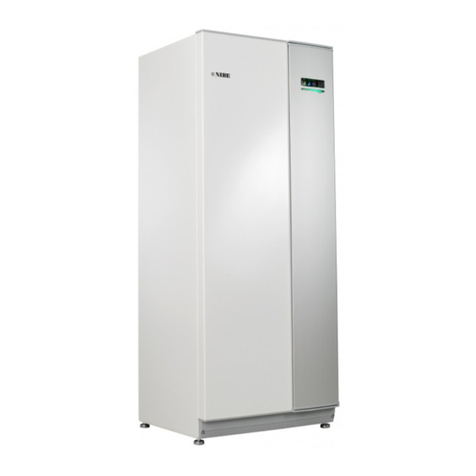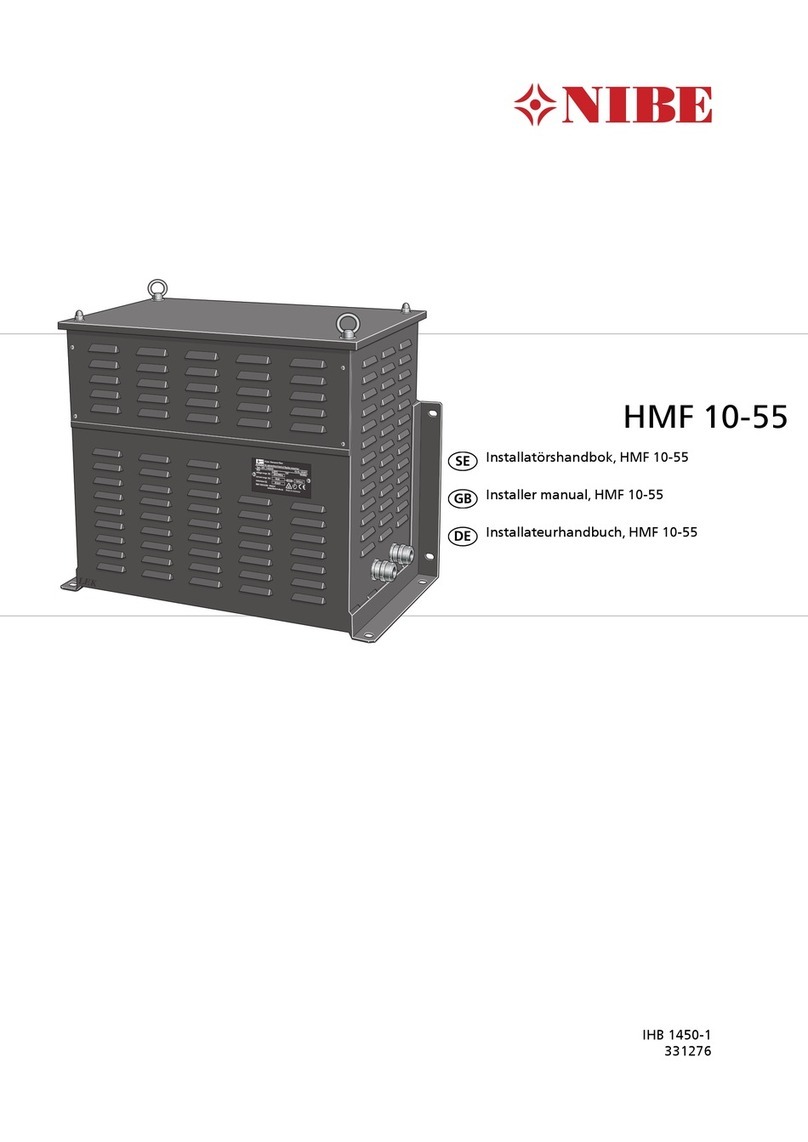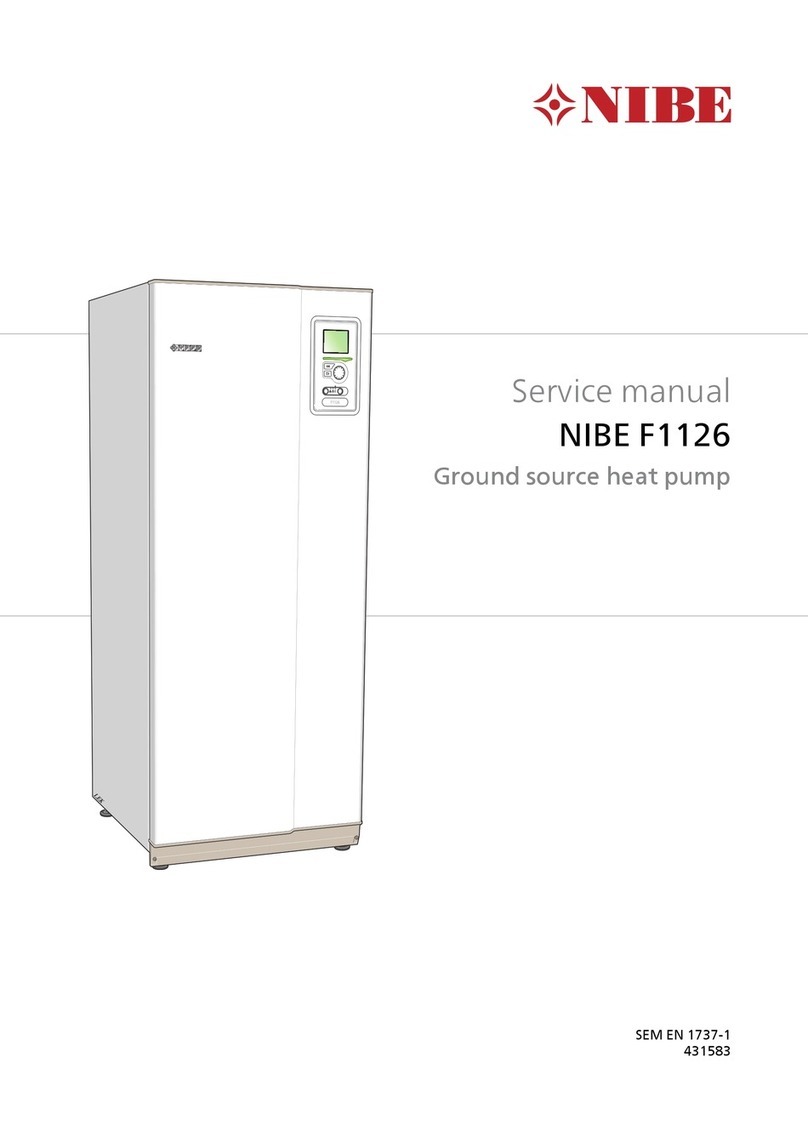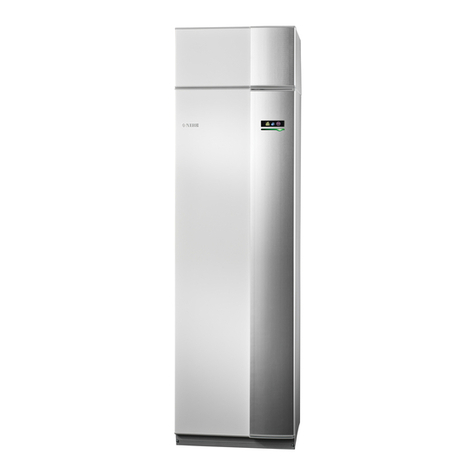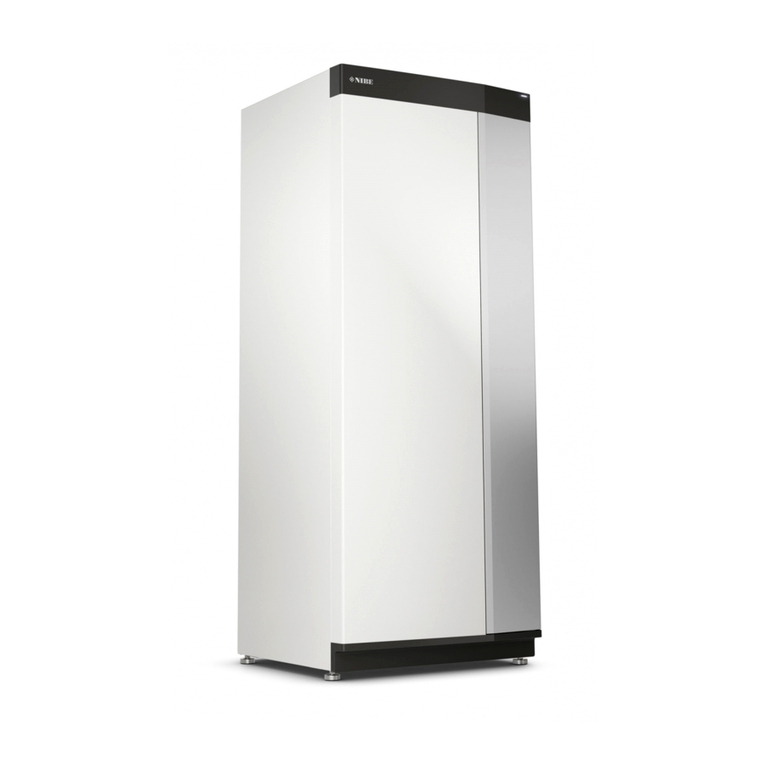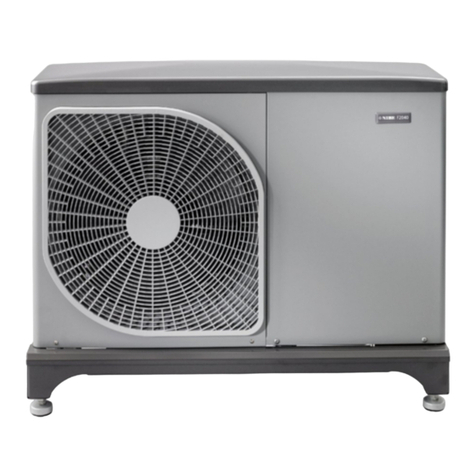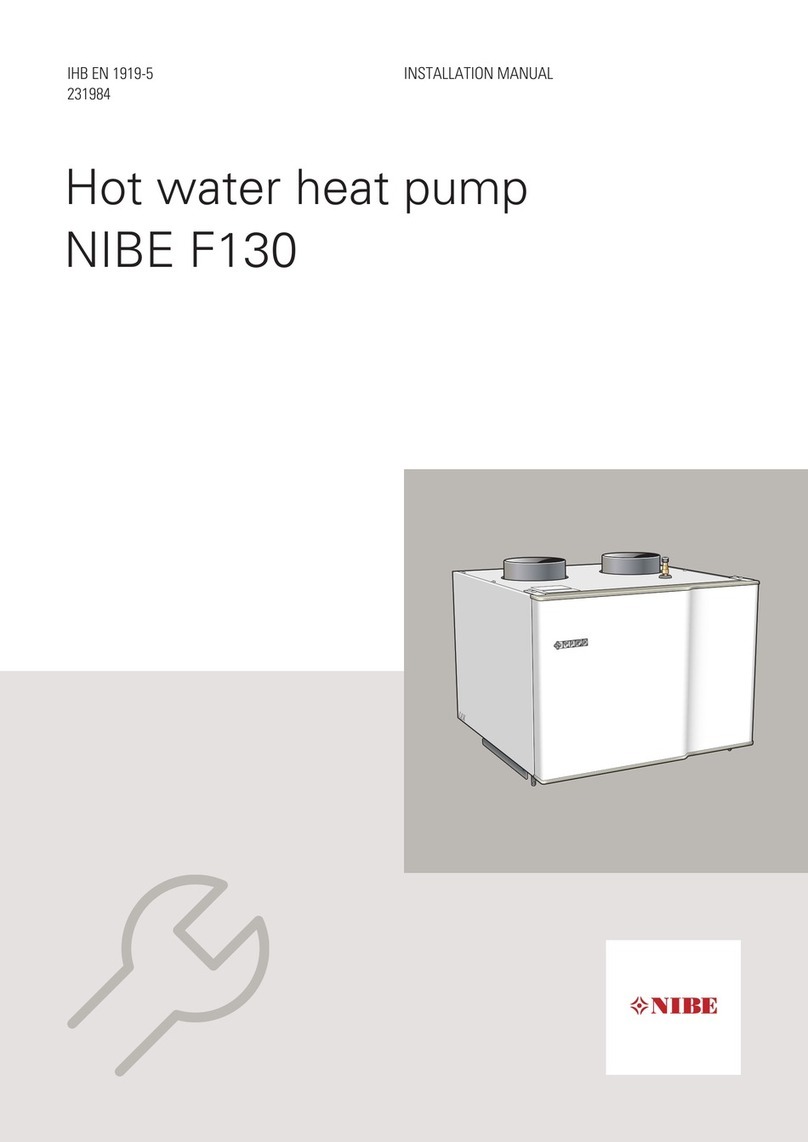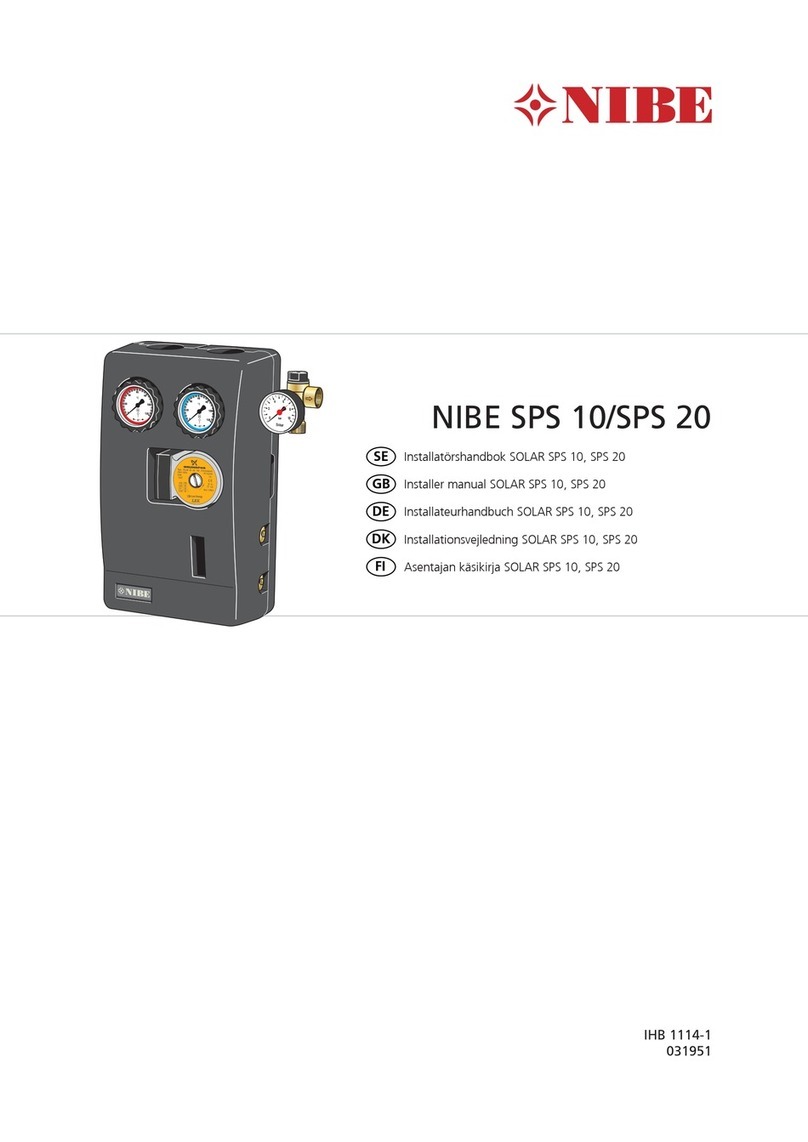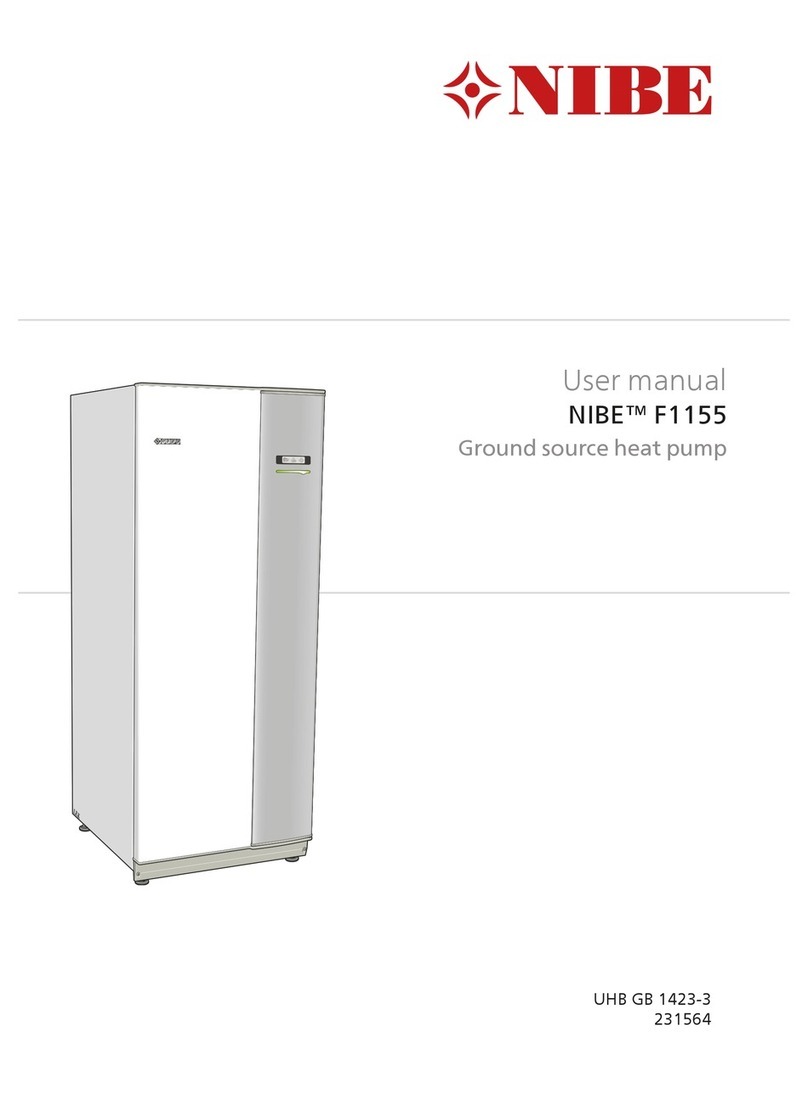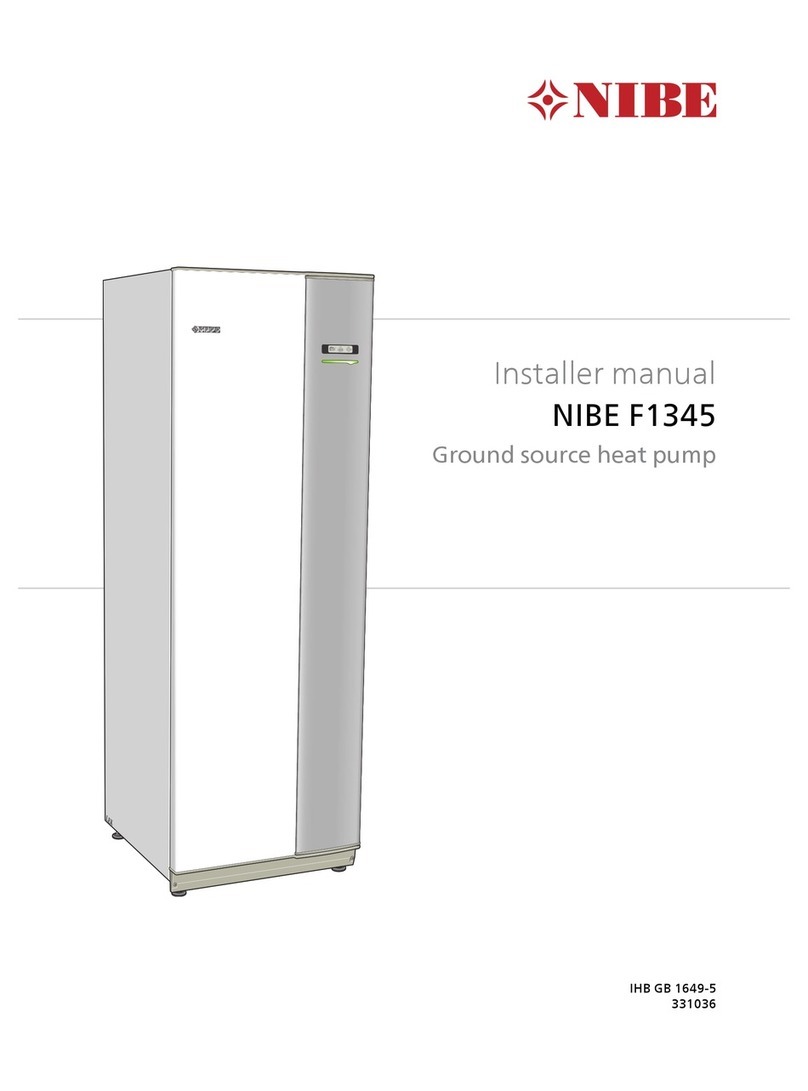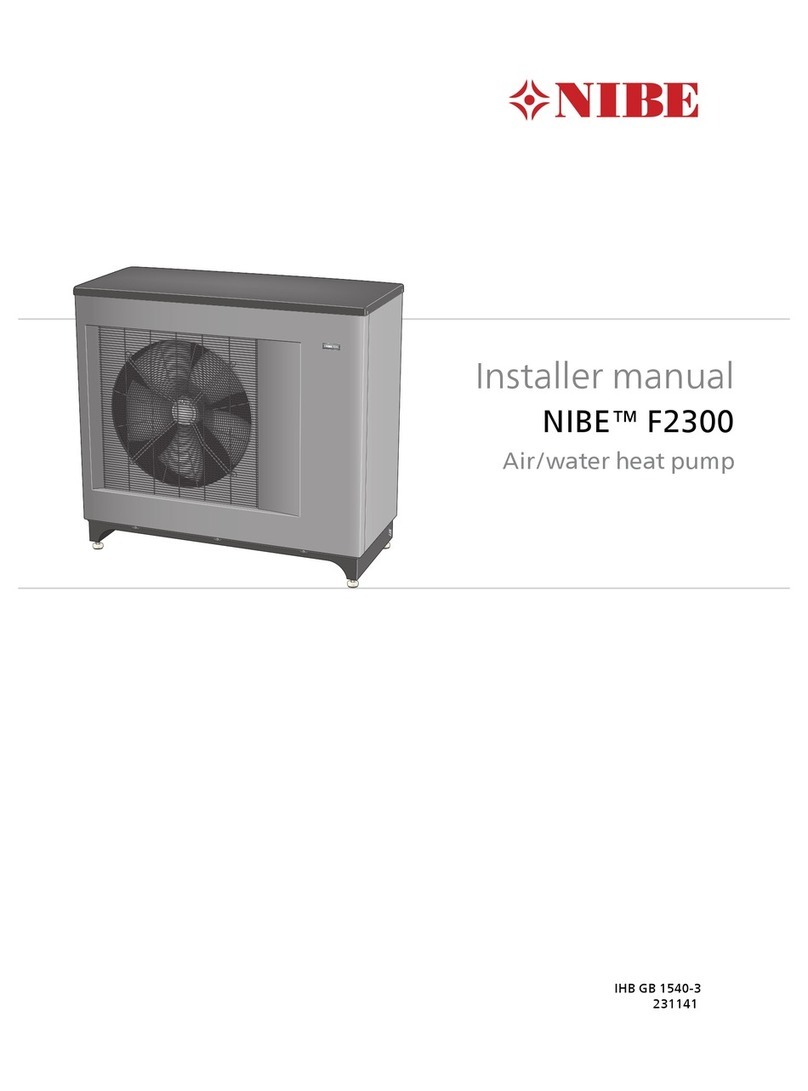
Before work is started on systems that contains combust-
ible refrigerants, safety checks must be performed to
ensure that the ignition risk is kept to a minimum.
The work must be carried out in a controlled way to
minimise the risk of contact with combustible gas or liquid
during the work.
All maintenance staff and those who work in close prox-
imity to the product must be instructed which type of
work is to be carried out. Avoid carrying out work in en-
closed spaces. The area surrounding the worksite must
be cordoned off. Ensure that the area is made safe by
removing combustible material.
Check whether there is refrigerant in the area using a
suitable refrigerant detector prior to and during work, to
notify the service technician whether there is a possible
flammable atmosphere or not. Ensure that the refrigerant
detector is suitable for combustible refrigerant, i.e. does
not generate sparks or cause ignition in any other way.
If hot work is carried out on the heat pump, a powder
or carbon dioxide fire extinguisher must be to hand.
Those who carry out work with refrigerant system con-
nections, including exposing pipes that contain or have
contained combustible refrigerant, may not use potential
ignition sources in such a way that that can lead to risks
of fire or explosions.
All potential ignition sources, including cigarette smoking,
should be kept at a safe distance from the service work
area where combustible refrigerant can leak out. Before
carrying out work, the area surrounding the equipment
must be checked to ensure that there are no ignition
risks. "No smoking" signs must be displayed.
Ensure that the work is carried out outdoors or that the
work area is ventilated before the system is opened and
before any hot work is carried out. The area must be
ventilated whilst the work is being carried out. There must
be ventilation around any refrigerant that comes out,
which should be routed outdoors.
If electrical components are replaced, the replacement
parts must be fit for purpose and have the correct tech-
nical specifications. Always follow the manufacturer's
guidelines regarding maintenance and servicing. Contact
the manufacturer's technical department in the event of
any doubts.
The following checks must be carried out for installations
that use combustible refrigerants.
႑The filling quantity is appropriate for the size of the
space where the parts that contain refrigerant are in-
stalled.
႑Ventilation equipment and outlet work correctly and
without obstructions.
႑If an indirect refrigerant circuit is used, check whether
the secondary circuit contains refrigerant.
႑All markings of equipment are visible and clear.
Markings, signs and similar that are not clear must
be replaced.
႑Refrigerant pipes and components are positioned in
such a way that it is not likely that they be subjected
to substances that can corrode components contain-
ing refrigerant, if these components are not made of
material that is resistant against corrosion, or not ap-
propriately protected against such corrosion.
Repair and maintenance of electrical components must
include initial safety checks and procedures for compon-
ent inspection. In the event of a fault, which can cause
a safety risk, do not supply any power to the circuit until
the fault has been rectified. If the fault cannot be rectified
immediately, and operation must continue, an adequate
temporary solution must be implemented. This must be
reported to the equipment owner, so that all parties have
been informed.
The following checks must be carried out at the initial
safety checks.
႑That the capacitors are discharged. Discharging must
be done safely, to prevent the risk of sparking.
႑That no powered electrical components or live cables
are exposed when filling or collecting refrigerant or
when the system is flushed.
႑That the system is continually grounded.
Removal and draining
When a cooling circuit is opened for repairs – or for an-
other reason– work must be carried out in a conventional
manner. Due to the risk of fire it is important that best
practice is applied. Follow the procedure below.
1. Drain the refrigerant.
2. Flush the circuit with inert gas.
3. Drain the circuit.
4. Flush again with inert gas.
5. Open the circuit by cutting or burning.
Collect the refrigerant in the intended container. Flush
the system with oxygen-free nitrogen to make the device
safe. This process may need to be repeated several times.
Compressed air and oxygen may not be used.
Flush the system by breaking the vacuum with oxygen-
free nitrogen, and filling the system to working pressure,
relieving the pressure to atmospheric pressure and finally
pumping to vacuum. Repeat the process until no refriger-
ant remains in the system. After the final filling of oxygen-
free nitrogen, relieve the pressure in the system to atmo-
spheric pressure, so that work can be carried out. This
type of flushing must be carried out if hot work is to be
performed on the pipe system.
3Chapter 1 | Important informationNIBE™ F370


















